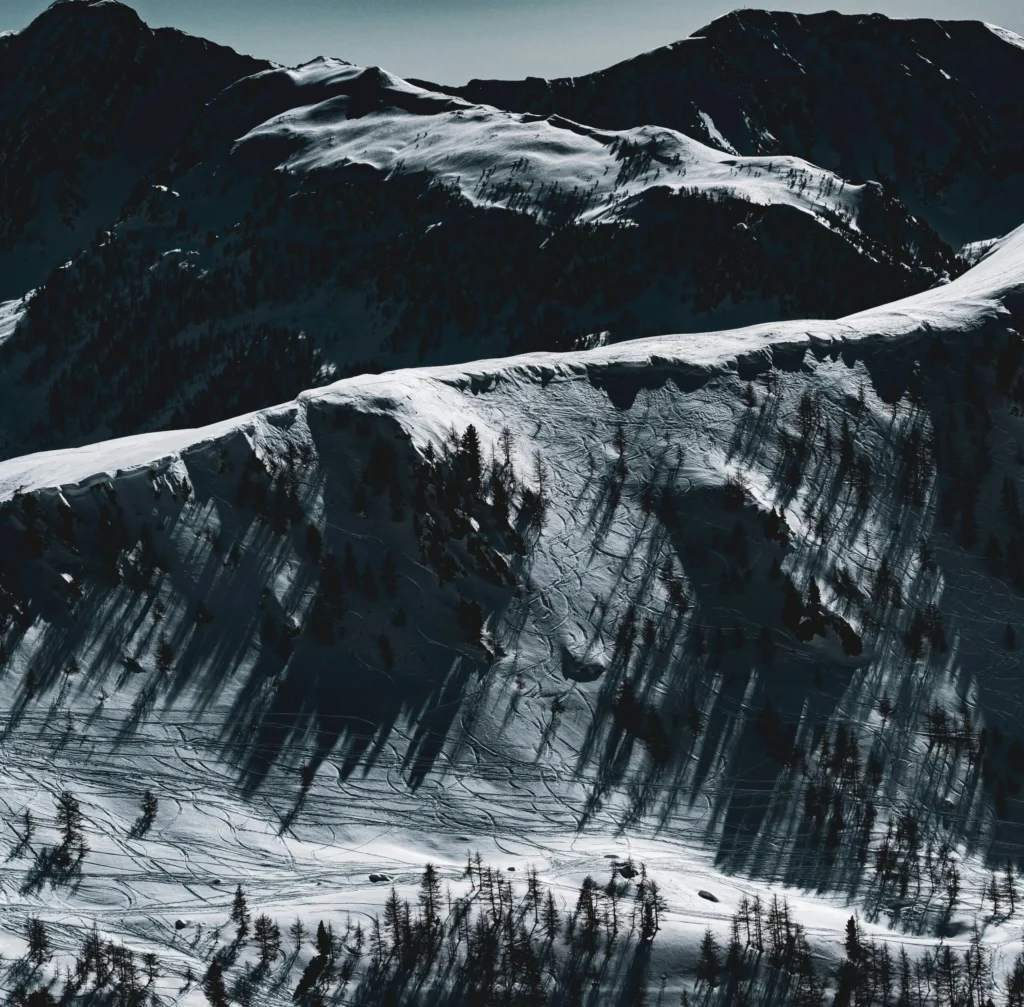Introduction:
Carving through pristine powder, feeling the wind whip past your face, and leaving graceful single tracks in your wake – this is the essence of monoskiing, a thrilling sport that offers an unparalleled experience on the slopes. Whether you’re a seasoned skier seeking a new challenge or a curious newcomer eager to explore the world of single-skiing, this comprehensive guide will equip you with everything you need to know to embark on this exhilarating adventure.
Table of Contents
1. Understanding Monoskiing Basics:
What is monoskiing?
Monoskiing involves riding on a single, wider ski instead of the traditional two. This unique setup provides a different skiing experience, characterized by increased stability, effortless carving, and a more dynamic connection to the snow.
Benefits of monoskiing:
- Enhanced stability: The wider platform of a monoski provides greater stability, making it easier for beginners to learn and control.
- Effortless carving: The single ski design allows for smooth, effortless carving turns, enabling you to glide gracefully through the snow.
- Dynamic connection to the snow: Monoskiing fosters a more direct connection to the snow, allowing you to feel every nuance of the terrain and adjust your movements accordingly.
- Unique and exhilarating experience: Monoskiing offers a unique and exhilarating experience that differs significantly from traditional skiing, providing a fresh perspective on the sport.
Differences from traditional skiing:
- Learning curve: Mono-skiing has a slightly steeper learning curve compared to traditional skiing, requiring more balance and coordination.
- Turning techniques: Turning techniques differ from traditional skiing, emphasizing edging and weight distribution rather than parallel skiing.
- Equipment: Mono-skiing requires specialized equipment, including a wider ski, specific bindings, and poles.

2. Essential Monoskiing Gear:
Choosing the right monoski:
Selecting the right monoski is crucial for a comfortable and enjoyable experience. Consider your height, weight, skill level, and preferred riding style when making your choice.
Proper binding selection:
Bindings play a vital role in securing your boots to the monoski and transferring your movements to the ski. Choose bindings that are compatible with your boots and offer the desired level of support and flexibility.
Importance of ski poles:
Ski poles provide balance and assistance in maneuvering the monoski. Choose poles that are the appropriate length and have comfortable grips.
Protective equipment:
Safety is paramount in any winter sport. Wear a helmet, protective clothing, and consider additional padding for your knees and elbows.
3. Mastering Monoskiing Techniques:
Proper stance and balance:
Maintaining a proper stance and balance is essential for controlling the monoski. Keep your knees slightly bent, your back straight, and your weight centered over the ski.
Turning techniques:
Turning on a monoski involves edging, weight distribution, and body positioning. Learn to initiate turns by shifting your weight and applying pressure to the edges of the ski.
Speed control:
Controlling your speed is crucial for safety and enjoyment. Use edging, weight distribution, and body positioning to adjust your speed on different slopes.
Stopping methods:
Mastering various stopping methods is essential for safe skiing. Learn to perform snowplow stops, side slips, and controlled falls to slow down or come to a complete stop.
Advanced maneuvers:
As your skills progress, you can learn advanced maneuvers such as carving, jumping, and skiing in powder.

4. Finding the Perfect Monoskiing Locations:
Best slopes for beginners:
Beginners should start on gentle slopes with groomed runs and easy access to lifts. Look for dedicated learning areas or beginner-friendly ski resorts.
Challenging terrains for experts:
Experienced mono skiers can explore steeper slopes, off-piste areas, and challenging terrain parks. Research potential destinations and choose slopes that match your skill level.
Popular monoskiing destinations:
Several renowned ski resorts worldwide offer excellent monoskiing opportunities. Popular destinations include Whistler Blackcomb (Canada), Zermatt (Switzerland), and Vail (USA).
5. Safety Precautions and Tips:
Pre-skiing warm-up exercises:
To avoid injury,before hitting the slopes, always warm up your muscles before hitting the slopes. Perform dynamic stretches and light cardio exercises to prepare your body for the demands of monoskiing.
Understanding weather conditions:
Before leaving, check the weather forecast and be ready for any changes in the weather. Dress appropriately and be aware of potential hazards such as avalanches.
Knowing your limits:
Don’t push yourself beyond your comfort zone. Start with easier slopes and gradually progress to more challenging terrain as your skills improve.
Emergency procedures:
Familiarize yourself with emergency procedures in case of an accident. Learn basic first aid and carry a whistle or other signaling device.
Exercises to Enhance Monoskiing Balance and Strength
Monoskiing demands a unique combination of balance, strength, and coordination. To excel in this sport, incorporating specific exercises into your training regimen is crucial. Here are some of the best exercises to enhance your monoskiing performance:
Balance Exercises:
- Single-leg balance: Stand on one leg for as long as possible, keeping your core engaged and your back straight. Repeat on the other leg.
- Bosu ball exercises: Perform squats, lunges, and other exercises on a Bosu ball to challenge your balance and stability.
- Balance board training: Use a balance board to practice shifting your weight and maintaining control while mimicking the movements of monoskiing.
- Yoga or Pilates: These disciplines focus on core strength, flexibility, and balance, which are essential for monoskiing.
Strength Exercises:
- Squats: Build leg strength and power for explosive movements on the slopes.
- Lunges: Strengthen your legs and improve your balance and coordination.
- Deadlifts: Enhance overall body strength and improve your ability to control your weight and balance.
- Plank variations: Strengthen your core muscles for better stability and control on the monoski.
- Pull-ups: Improve upper body strength for maneuvering the monoski and maintaining control.
- Push-ups: Build upper body strength and stability for better pole planting and balance.
Additional Tips:
- Plyometric exercises: Include plyometric exercises like box jumps and jump squats to improve your explosive power and agility.
- Core strengthening: Focus on exercises that target your core muscles, such as planks, crunches, and Russian twists.
- Cardiovascular training: Engage in regular cardiovascular activities like running, cycling, or swimming to improve your endurance and stamina for long days on the slopes.
- Specificity: Incorporate exercises that mimic the movements of monoskiing, such as side-to-side lunges and single-leg squats with rotations.
- Progressive overload: Gradually increase the intensity and duration of your workouts to challenge your body and improve your fitness level.
Remember:
Before beginning any new fitness regimen, especially if you have any underlying medical concerns, speak with a healthcare provider.
Use proper form and technique to avoid injuries.
Start with lighter weights and gradually increase the intensity as you get stronger.
When your body tells you to take a day off, do so.
By incorporating these exercises into your training routine, you’ll develop the balance, strength, and coordination necessary to excel in monoskiing and enjoy a more rewarding experience on the slopes.
Conclusion:
Monoskiing is an exhilarating sport that offers a unique and dynamic experience on the slopes. By following these five steps, you’ll be well-equipped to embark on this exciting adventure. Remember to prioritize safety, choose the right equipment, master essential techniques, find suitable locations, and always respect the mountain environment. With dedication and a sense of adventure, you’ll be carving graceful single tracks and experiencing the thrill of monoskiing in no time.

1 thought on “Monoskiing: The 1 & Ultimate Single-Ski Adventure in 5 Steps”
Comments are closed.